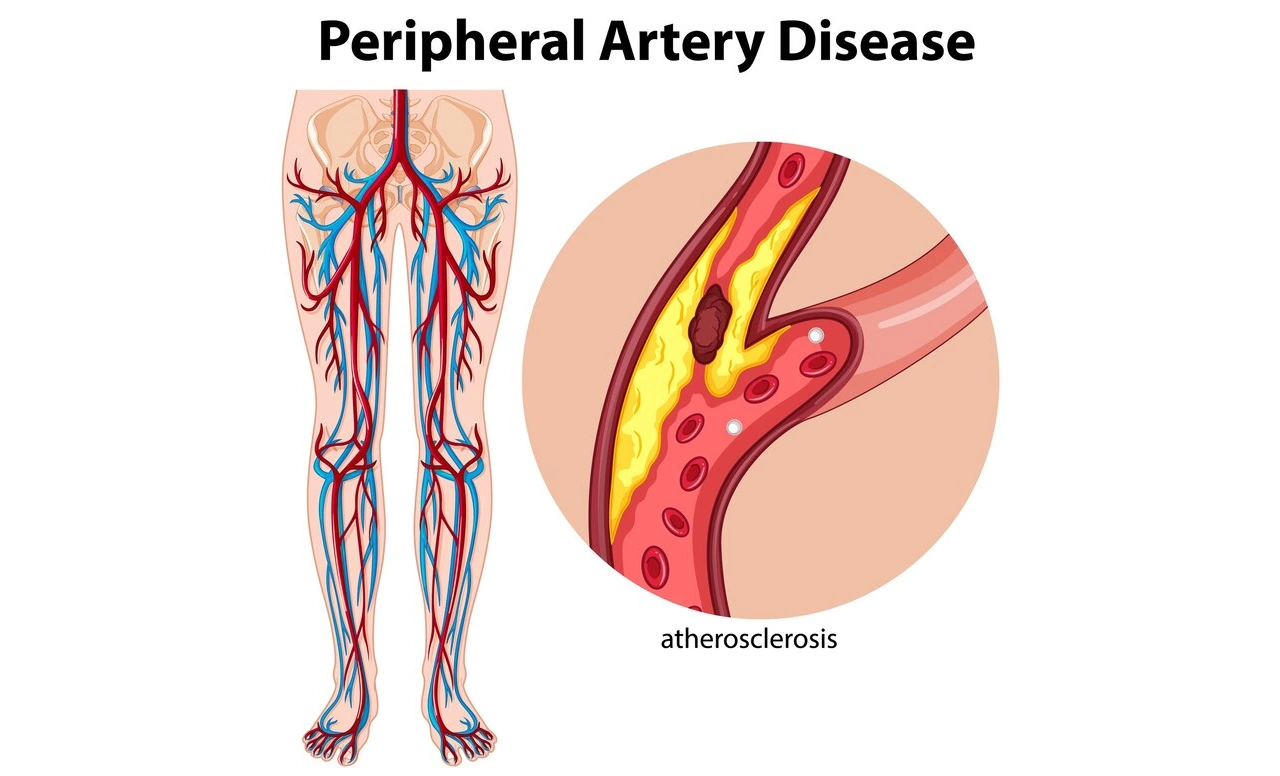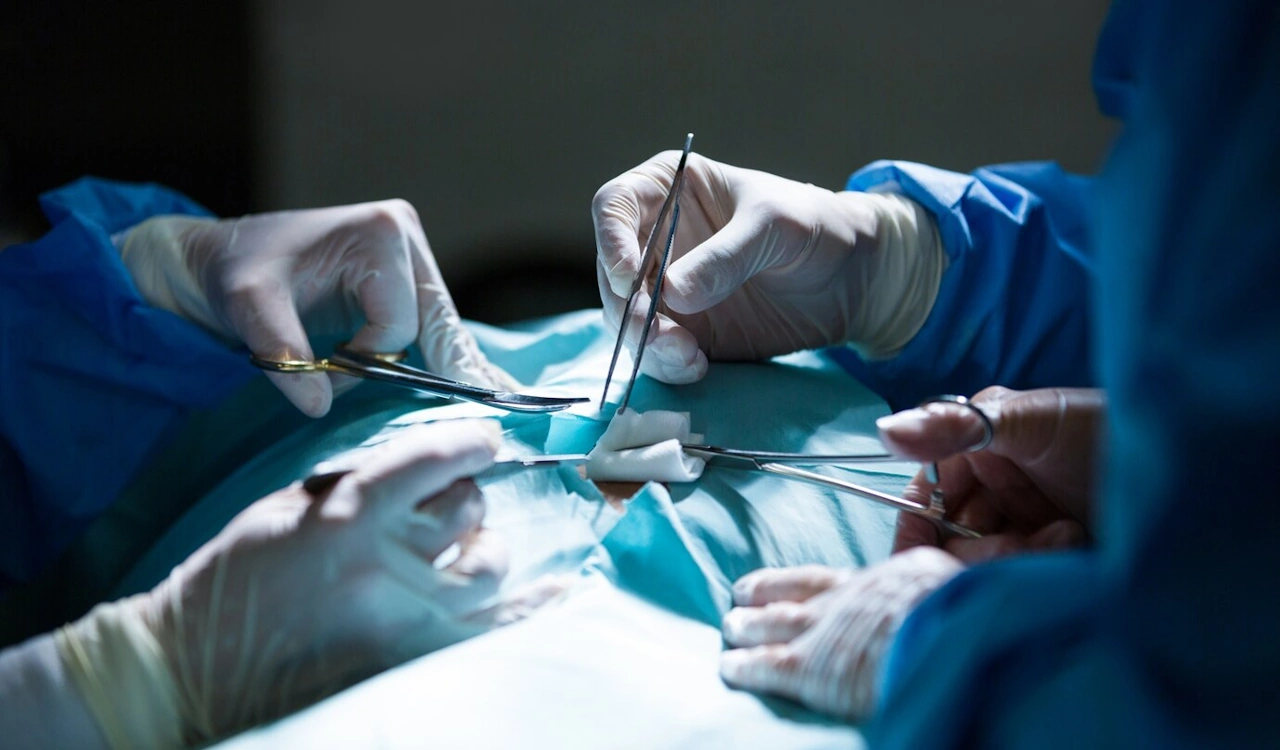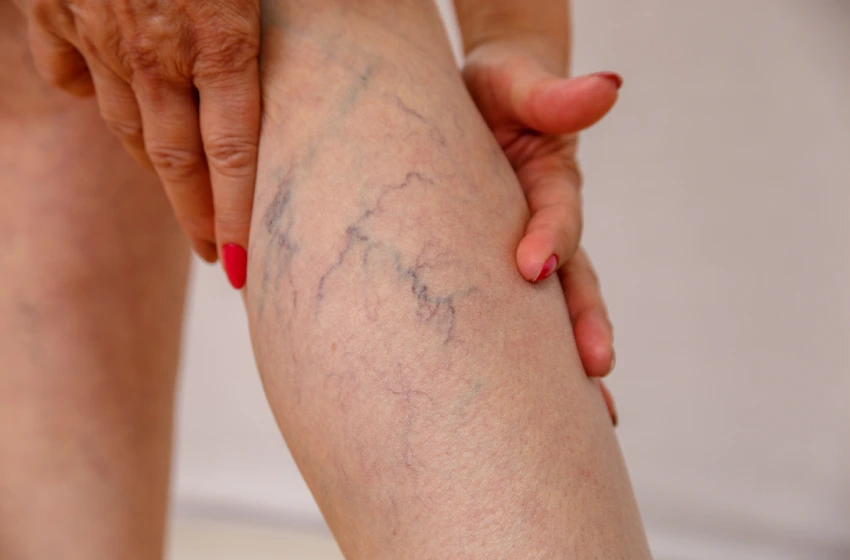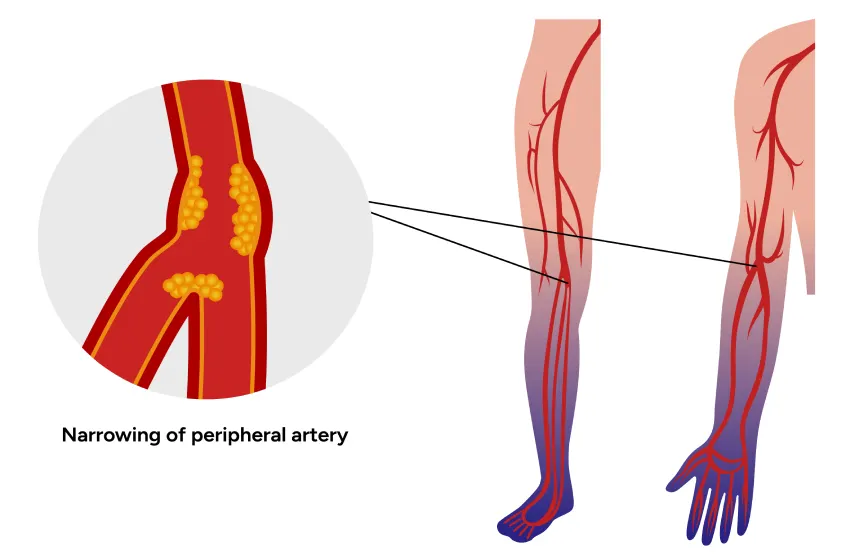When the arteries in the legs are severely blocked, it can lead to serious health issues, including the risk of amputation. This is where leg bypass surgery, a significant medical procedure, comes into play. It’s designed to tackle these blockages by creating a new route for blood flow, bypassing the obstructed areas.
This surgery is particularly crucial for patients suffering from a condition known as peripheral arterial disease (PAD), where the arteries in the legs are narrowed or blocked by plaque build-up. PAD can cause leg pain, and difficulty in walking, and in severe cases, can lead to tissue death or gangrene requiring amputation.
Dr. Sumit Kapadia, a renowned vascular and endovascular surgeon, brings his extensive experience and specialized skills to this life-saving procedure. With his thorough understanding of the vascular system and proficiency in advanced surgical techniques, Dr Kapadia has been instrumental in restoring normal blood flow to the legs of numerous patients, thus preventing the drastic measure of leg amputation.
His approach to treatment is not just about addressing the immediate problem but also about ensuring the overall well-being and long-term health of his patients. Dr. Kapadia’s expertise is complemented by his use of the latest medical technology and techniques, making him a trusted name in vascular surgery, not just in Vadodara and South Gujarat, but across the region.
By choosing to undergo leg bypass surgery with Dr Kapadia, patients are not only opting for a procedure that could save their legs from amputation but also for a quality of life improvement, enabling them to walk pain-free and live a more active lifestyle.

What the Treatment Involves

Leg bypass surgery is a complex yet highly effective procedure designed to restore blood flow in the legs when arteries become severely blocked. This blockage is often due to a condition known as atherosclerosis, where plaque builds up inside the arteries, narrowing them and restricting blood flow.
Here’s a step-by-step explanation of what the treatment typically involves:
Preparation: Before the surgery, detailed imaging tests such as an angiogram are performed to map out the blocked areas in the arteries. This helps Dr. Kapadia plan the surgery with precision.
Anesthesia: The surgery is performed under general anaesthesia, which means the patient will be asleep and not feel any pain during the procedure. Some patients may also undergo this procedure under spinal anesthesia.
Making the Bypass: The goal of the surgery is to create a new pathway for blood flow around the blocked section of the artery. Dr. Kapadia uses a graft for this bypass. This graft can be a blood vessel taken from another part of the patient’s body (often the saphenous vein in the leg), or a synthetic tube made of materials compatible with the body. ( Dacron or PTFE)
The Procedure: An incision is made in the groin, thigh or leg, and the graft is sewn above and below the blocked artery, creating a new route for the blood to flow. This bypasses the blocked part of the artery.
Monitoring Blood Flow: Once the graft is in place, Dr. Kapadia checks to ensure that blood flow through the bypass is functioning as intended.
Closing the Incision: After confirming successful blood flow, the incision is closed with stitches or surgical staples.
Post-Operative Imaging: Sometimes, additional imaging tests are done after the surgery to ensure the bypass is functioning correctly.
This procedure is highly technical and requires the expertise of a skilled vascular surgeon like Dr. Kapadia. His experience in handling complex cases and using advanced surgical techniques ensures that the risk of complications is minimized and the chances of a successful outcome are maximized.
By effectively bypassing the blocked area, this surgery helps restore normal blood flow to the leg, which is crucial for maintaining healthy tissue and preventing the severe consequences of prolonged poor circulation, such as leg ulcers or, in extreme cases, the need for amputation.

Leg Bypass Surgery Benefits and Effectiveness

Leg bypass surgery is a critical intervention for individuals suffering from severe peripheral arterial disease (PAD), especially in India, where the awareness and need for such specialized vascular treatments are growing. Here’s an in-depth look at the benefits and effectiveness of this procedure avoiding leg amputation through vascular surgery.
Restoration of Blood Flow: The primary aim of leg bypass surgery, a key treatment for blocked leg arteries, is to restore normal blood flow. This is particularly beneficial for those suffering from atherosclerosis, a common cause of PAD. By ensuring adequate blood flow, the surgery helps in healing leg ulcers and prevents the risk of tissue death, thus averting potential leg amputation.
Alleviation of Pain: Patients with PAD often experience severe leg pain, impacting their daily lives. This procedure, performed by top vascular surgeons in India like Dr Sumit Kapadia, can significantly reduce such discomfort, enhancing the patient’s quality of life.
Preventing Leg Amputation: For many facing the severe stage of PAD, leg amputation becomes a looming threat. Leg bypass surgery, a highly effective treatment in the field of vascular surgery in India, serves as a lifesaver by preventing the loss of a limb.
High Success Rates: Dr. Kapadia’s expertise in leg bypass surgery ensures high success rates. His proficiency in advanced surgical techniques and thorough understanding of vascular health significantly improve the chances of a successful outcome.
Long-term Solution: Unlike temporary treatments, this surgery offers a long-term remedy for chronic circulation problems in the legs, addressing the root cause of the arterial blockage.
Enhanced Mobility and Lifestyle: Post-surgery, patients often experience improved mobility. They can walk pain-free, engage in various physical activities, and enjoy a more active and fulfilling lifestyle.
Reduced Complications from PAD: Timely and successful vascular surgery reduces the risk of severe PAD complications like gangrene and infections resulting from poor leg circulation.
In summary, leg bypass surgery, a cornerstone in treating PAD and avoiding leg amputation, offers significant benefits. With Dr Sumit Kapadia’s expertise, patients in Vadodara and across India have access to world-class treatment for blocked leg arteries.
Ideal Candidates for Leg Bypass Surgery

Understanding who can benefit most from leg bypass surgery is crucial for patients seeking treatment for peripheral arterial disease (PAD) in India from on of the best Vascular surgeon in India. This section outlines the ideal candidates for this life-saving procedure:
Patients with Severe Peripheral Arterial Disease (PAD): Individuals diagnosed with severe PAD, characterized by significant blockages in the leg arteries, are primary candidates for this surgery. The condition often leads to symptoms like leg pain, cramps, and difficulty walking.
Those at Risk of Leg Amputation: Leg bypass surgery is particularly beneficial for patients facing the imminent risk of leg amputation due to severe arterial blockages. The procedure can prevent amputation and preserve the leg’s functionality.
People with Chronic Leg Pain and Ulcers: Patients experiencing chronic leg pain or those who have leg ulcers that are not healing due to poor circulation can significantly benefit from this procedure.
Individuals Not Responding to Other Treatments: Those who have not experienced sufficient relief from other treatments such as medication, lifestyle changes, or less invasive procedures are ideal candidates for leg bypass surgery.
Patients with Lifestyle Limitations Due to Leg Pain: Individuals whose daily activities and quality of life are severely affected by leg pain due to PAD may consider this surgery as a solution to regain mobility and independence.
Those with Long-Segment Arterial Blockage: Patients with long-segment blockage in the leg arteries, where a significant portion of the artery is narrowed or blocked, are ideal candidates for this surgical intervention.
During Procedure

The process of leg bypass surgery, a key procedure in vascular surgery for treating severe peripheral arterial disease (PAD), involves several critical steps:
Anesthesia: The patient is administered general anaesthesia, ensuring they are asleep and pain-free throughout the surgery.
Surgical Approach: Dr Sumit Kapadia, a renowned vascular surgeon in India, begins by making precise incisions in the leg, typically at the site of the blocked artery.
Creating the Bypass: The surgery involves using a graft to create a new pathway for blood flow around the blocked artery. This graft might be a vein from another part of the patient’s body or a synthetic tube, chosen based on the patient’s condition and the severity of the blockage.
Ensuring Proper Blood Flow: Once the graft is in place, Dr. Kapadia meticulously checks to ensure that blood is flowing correctly through the new bypass.
Closure: The incisions are then carefully closed with stitches or surgical staples.
Monitoring: Throughout the procedure, the patient’s vital signs are continuously monitored to ensure safety and effectiveness.
Recovery and Aftercare

The recovery phase and aftercare are crucial components of the leg bypass surgery process, ensuring the long-term success of the treatment for PAD:
Immediate Post-Operative Care: After the surgery, patients are typically monitored in a recovery room. Dr. Kapadia and his team closely observe the patient for any immediate post-operative complications.
Hospital Stay: Depending on the complexity of the surgery and the patient’s overall health, a hospital stay of 5 to 10 days may be required.
Pain Management: Patients may experience some pain and discomfort post-surgery, which is managed with prescribed pain medication.
Wound Care: Proper care of the surgical site is essential. Dr. Kapadia’s team provides detailed instructions on how to care for the wound to prevent infection.
Physical Activity: Gradual reintroduction of physical activity is encouraged. A personalized rehabilitation plan is often provided to aid in recovery and improve circulation.
Follow-Up Visits: Regular follow-up appointments with Dr. Kapadia are important to monitor the healing process and the effectiveness of the bypass.
Lifestyle Modifications: Patients are advised on lifestyle changes, such as diet and exercise, to improve overall vascular health and prevent future blockages.
Long-Term Monitoring: Ongoing monitoring and possibly medication will be required to ensure the long-term success of the bypass.
FAQs on Leg Bypass Surgery

The success rate of leg bypass surgery varies but is generally high, especially when performed by experienced vascular surgeons like Dr Sumit Kapadia. Factors such as the severity of the blockage and the patient’s overall health influence the outcome.
The duration of the surgery can range from 2 to 6 hours, depending on the complexity of the case and the number of arteries being bypassed.
As with any major surgery, there are risks such as infection, bleeding, and reactions to anaesthesia. However, the risks are minimized when the surgery is performed by a skilled surgeon.
Yes, patients are encouraged to walk soon after surgery, as it promotes blood flow and helps in the healing process. Initially, walking may be limited and should be gradually increased as advised.
There is no strict age limit for bypass surgery. The decision depends more on the patient’s overall health and the severity of their condition.
While there’s no maximum age, the risks and benefits must be carefully weighed, especially for elderly patients.
Post-operative pain is common but manageable with medications. The level of pain varies from person to person.
Some patients may be monitored in the ICU immediately after surgery as a precaution, especially in complex cases.
Walking can be resumed on 2nd or 3rd day after surgery, but the duration and intensity should be gradually increased over time.
Yes, most patients return to a normal, active life after recovery, though some lifestyle changes may be necessary.
The potential risks include wound infection, bleeding, and the need for further surgery if the graft fails.
Bypass surgery is usually considered when other treatments are ineffective. It’s avoided if the risks outweigh the benefits or if less invasive treatments can be effective.
No, bones are not cut during leg bypass surgery. The procedure involves incisions in the skin and muscles to access arteries.
Patients are typically moved to a recovery area for monitoring and then gradually begin the rehabilitation process.
Yes, climbing stairs is possible post-recovery, but it should be done gradually and as per the doctor’s advice.
Symptoms include leg pain, numbness, weakness, or coldness in the legs, and sometimes sores on the toes, feet, or legs.
Patients with severe arterial blockages not relieved by medication or other treatments and at risk of amputation are candidates for bypass surgery.
Testimonials

Leg Bypass Videos

Leg Bypass Blogs








